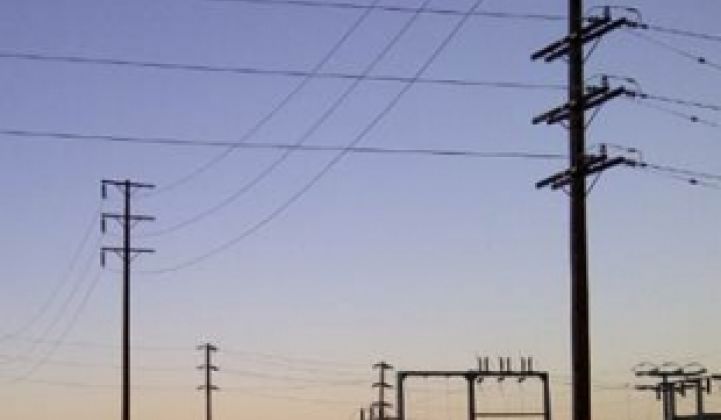On a cold morning in January 1985 I climbed the 256 steps of the Drax Power Station turbine hall to warm up. Snow blew into the open end of the building as the largest coal-fired power plant in Europe emerged from the Yorkshire coal fields in England. This memory stands out because today, almost 30 years later, I think of how far we have come, but more importantly, how much further we have to go.
For example, the smart grid seems to be the flavor of the month for investors. As a managing director at one of the longest-standing and most active cleantech venture capital firms in the world, Chrysalix Energy Venture Capital, I see a current smart grid frenzy happening around us. My worry is that investors who do not truly understand the fundamentals of this sector will negatively impact the cleantech investment community, a community where many have lost their shirts to date.
To me, investing in the smart grid is a process that is hard and riddled with potholes. Why?
* Drinking the Kool-Aid. Fifteen years ago I drank the Kool-Aid and began believing that change in the electric power industry would lead to investment returns like those in telecommunications. But the thesis was flawed. In 1978, a house had one phone line. Thirty years later, trillions of dollars of new wealth has been created from an explosion of new hardware and software services. In 1978, a house had one set of wires providing power and in 2050 it will still have one set of wires providing power. It’s a zero-sum game. Revenue to a new entrant is taken from another player who is sharing the rate-based pie.
* Utility engineers aren’t dumb. Telecom executives often tell me how terrible the power industry is and how they are going to “revolutionize the power industry” like they did with telecommunications. When did a mobile phone company last provide 99.9985% up-time? We need to understand an industry before throwing rocks at it.
* Regulatory nightmare. Utilities are one of the most regulated markets in the world. For a startup in this space, an alphabet soup of acronyms (e.g., PUC, NERC, FERC, ISO-MRC) are barriers to fast adoption, and the more there are, the harder and longer the path to success will be.
* Startups and utilities make poor bedfellows. My good friend Fred Dennert is the Head of Distribution Engineering at the Canadian electric utility B.C. Hydro, and when it comes to his top five priorities, he cites “safety for the public, safety for my linemen, safety for other employees, safety for property and equipment, and reliability," adding, "The CEO only calls when the lights go out. Where does working with an unknown startup with unproven technology fit in? Why would I want anything on my network from a company that may not be around in five years?”
* The adoption cycle is long. If a startup does make progress with a utility, they need to be able to survive the long and fickle adoption cycle of these customers. They bid, re-bid, change their minds, test seven different solutions, bid again, re-bid, pilot again, and pick the solution where the startup has a large strategic partner as an ally. This understandably takes time because the utility will live with the consequences for 30 years.
* Vertical take-off. When the service rollout does occur, the startup needs to jump from $2 million in sales one year to $200 million the next year. It is like doing a 20-foot pole vault after having only jumped four feet in high school. Again, a utility will look at who the startup is partnered with before making a choice.
I’m not writing off smart grid investments entirely. In fact, at Chrysalix, after talking with hundreds of startups, we have invested in two promising companies that met our threshold: Primus Power, a developer of megawatt-scale, distributed battery storage systems for the cost of pumped hydro, and Enbala Power Networks, a firm that provides grid balance in real time for utilities and ISOs where supply and demand is balanced by adjusting demand-side loads in real time, on an ISO signal that is emitted every 2 to 6 seconds.
Certain smart grid investments certainly do make sense, such as:
- Storage innovators -- Electricity is the ultimate in real-time business: it is generated and consumed at the speed of light. Cheap storage will revolutionize the industry.
- “Fallen stars” -- Companies that have basically survived the long adoption cycle for eight to 10 years, are getting traction, but whose investors are tired.
- Ones with diversity of customer risk -- At Chrysalix, we prefer smart grid plays where electric utilities are not the only customer. A customer? Yes, but the only customer? No.
- Ones with fundamental economics --The economics of a solution should make sense without a rate base increase and without government subsidies. The need for this support tells us that the economics generally don’t make sense.
I believe in the space, but ask investors and entrepreneurs to recognize the difficulties we face, to think through the business models that work, and to clearly explain how the fundamental economics, the regulatory environment, the strategic partners, and the need for diverse customer traction can all be addressed.
Finally, thank the hard-working utility engineer, lineman, or executive at your local electricity company. Life’s more fun with the lights on.
***
Richard MacKellar is Managing Director at Chrysalix Energy Venture Capital.



